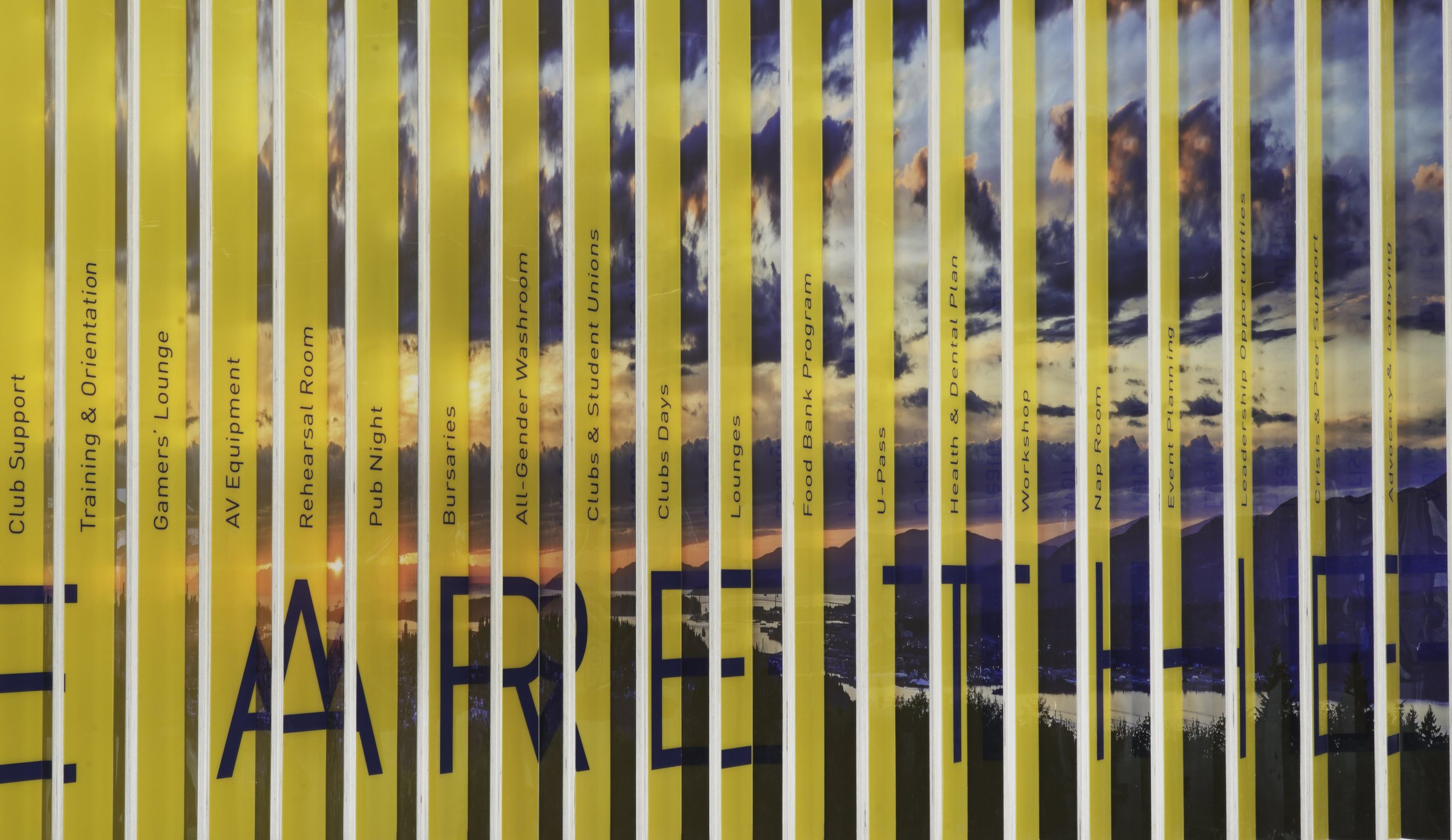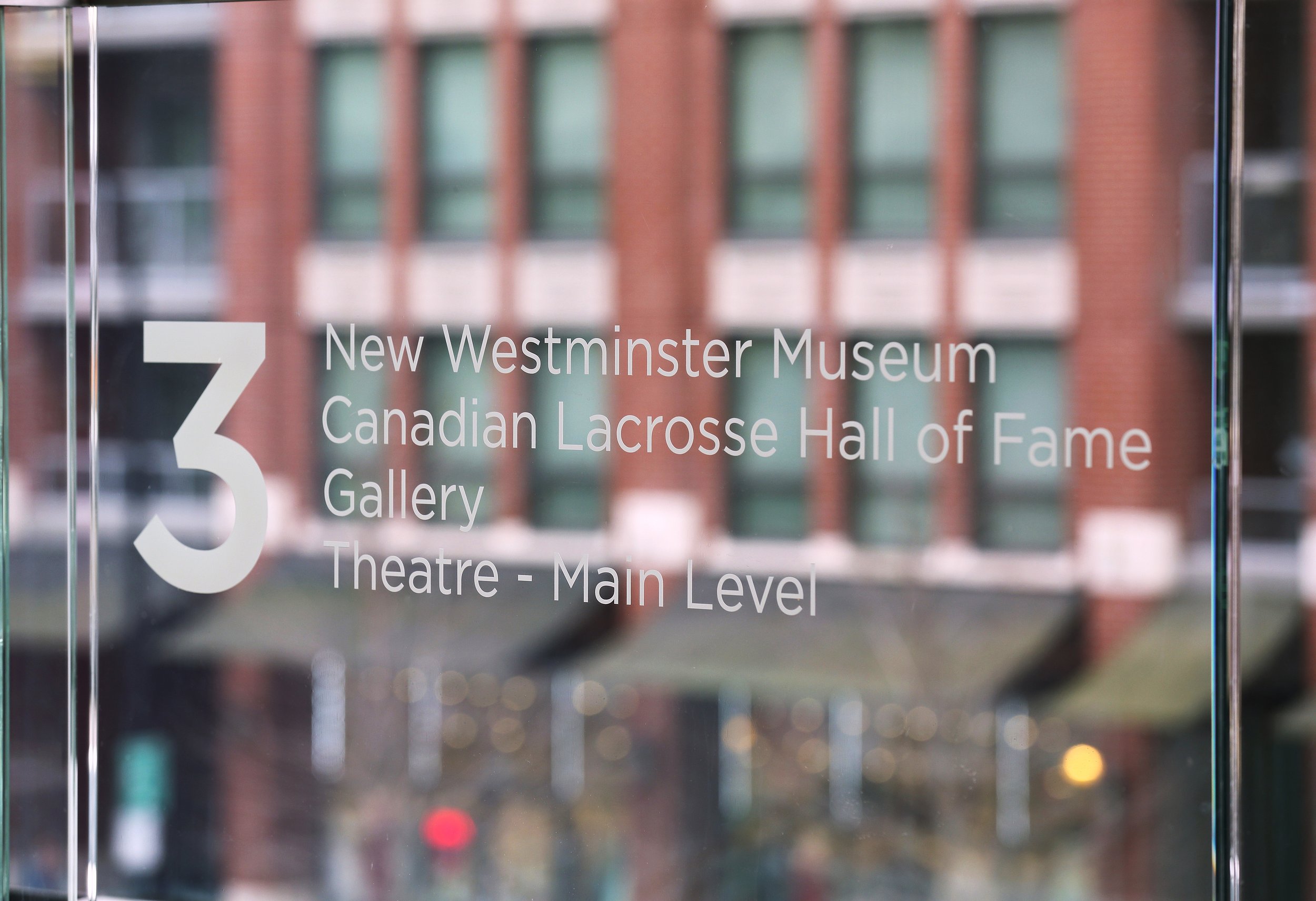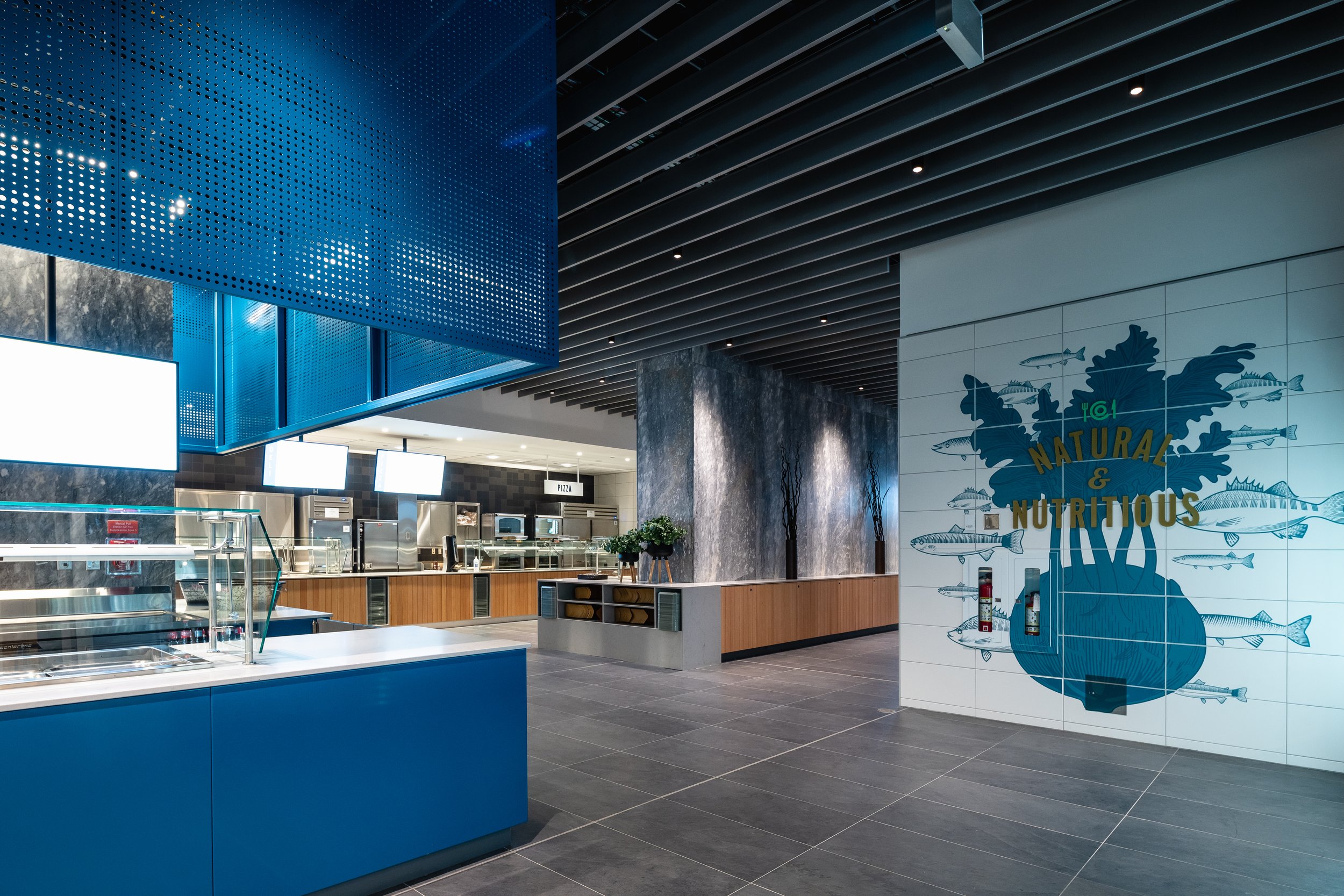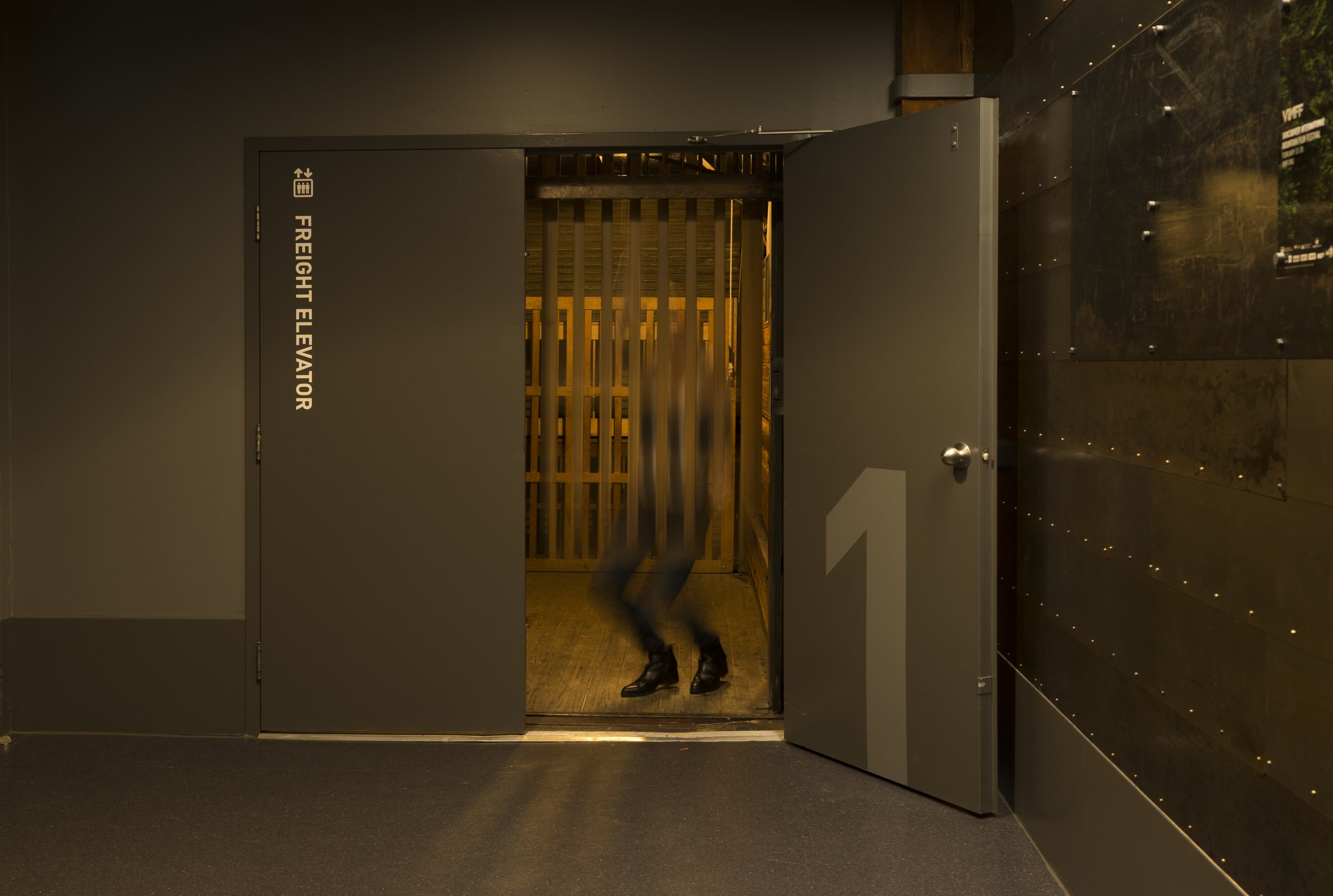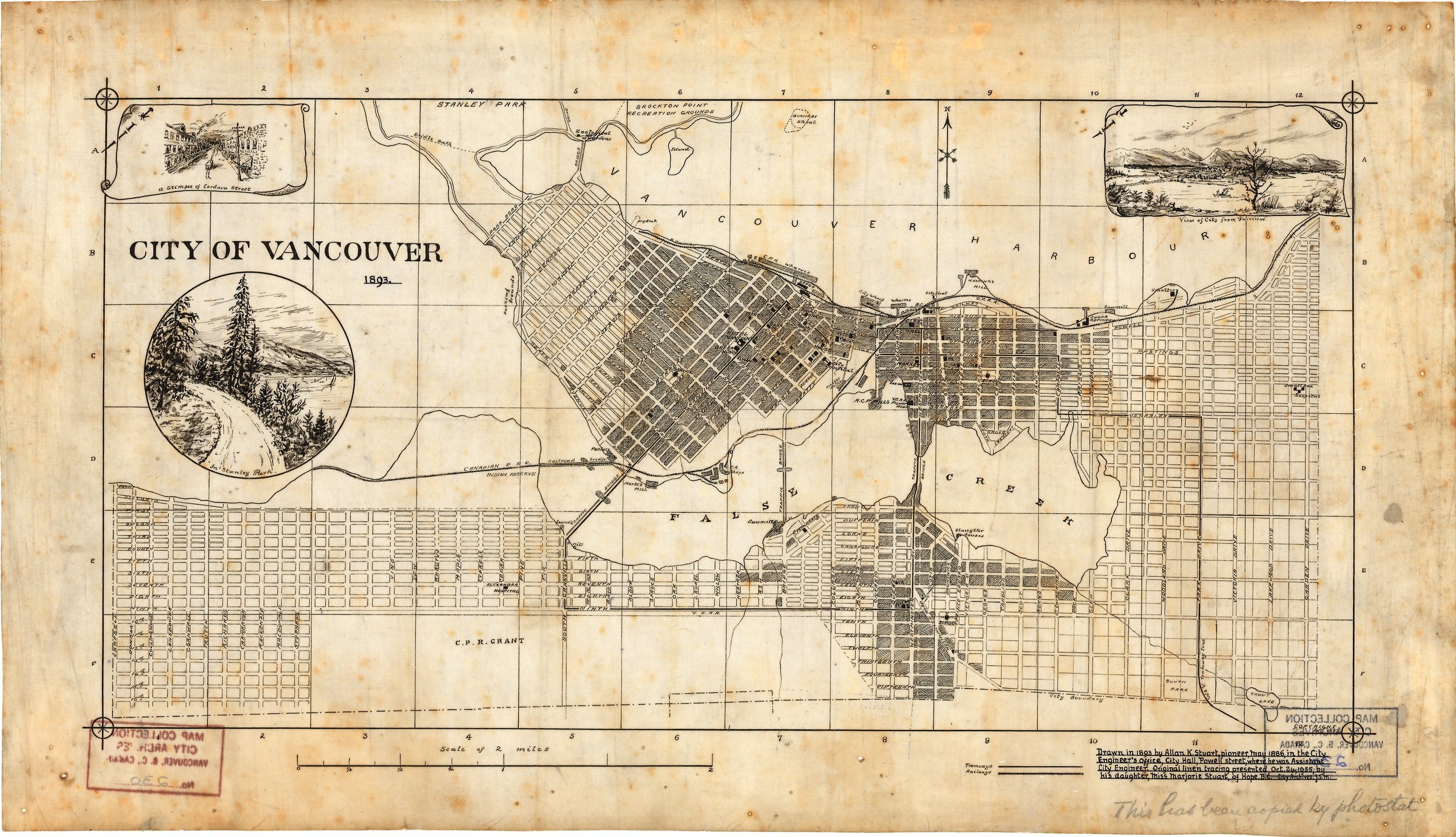
CHINA CREEK INTERPRETIVE FEATURE
This work is an interpretive feature is a form of memorial to lost creeks in Vancouver. It shares ways that the creation of the city has reshaped the lands and waters. These startling changes include the infill of waters east of Main Street to create lands for the Great Northern Railway. As well, the work shows the loss of multiple streams that once flowed north into what is now called False Creek.
Client: City of Vancouver
Location: Vancouver, BC
Scope: Research, content development, design and construction drawings
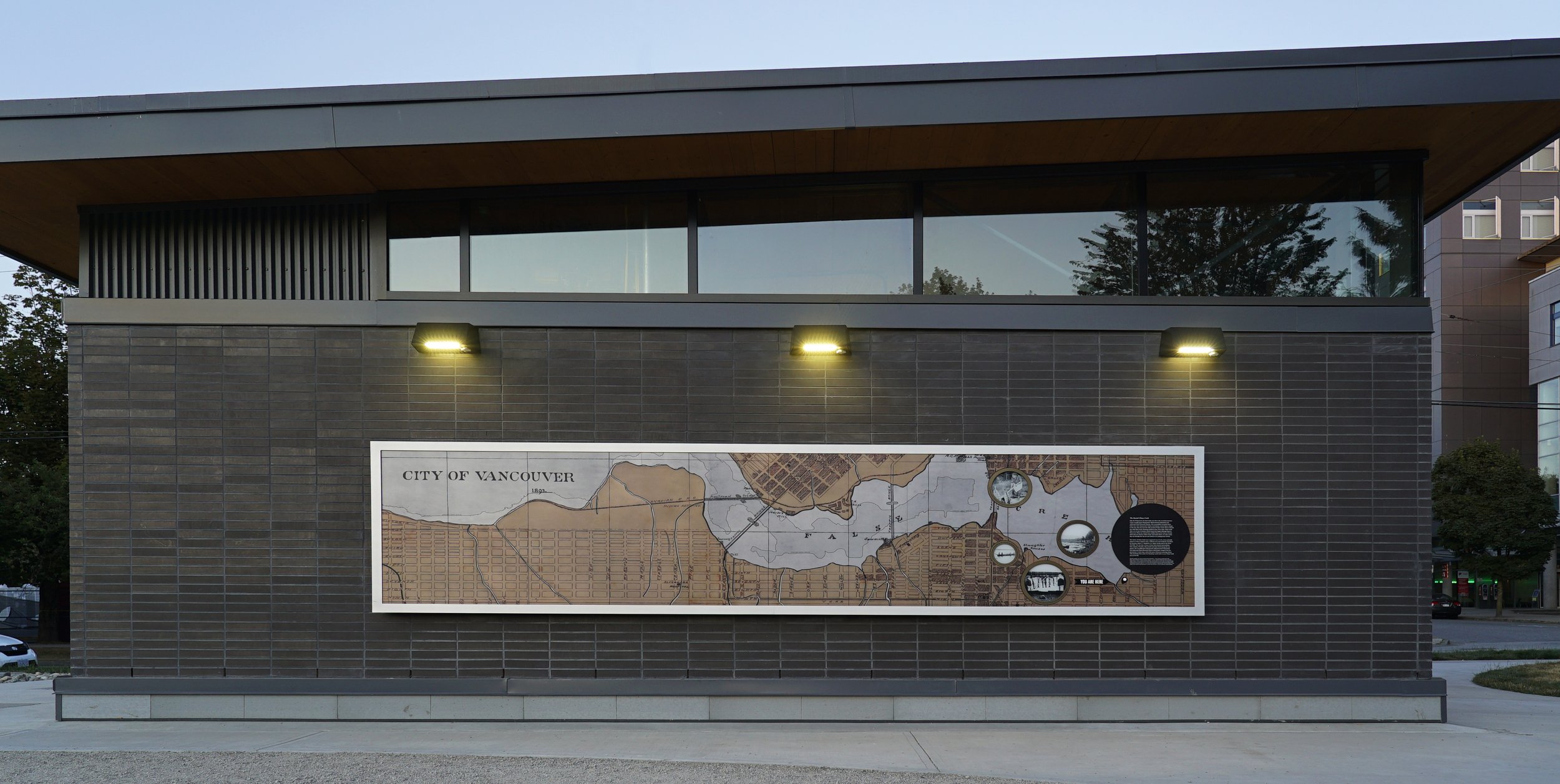
A hand-drawn linen map from 1893 forms the backdrop of the story. Tax receipts and newspaper clippings round out a story of development which led to the loss of fish and wildlife habitat throughout this area of what is now Vancouver. All of these materials were stored in the City of Vancouver Archives.
Our historical researcher and content developer, artist Faith Moosang, collected photos which take the viewer back in time, directly illustrating the watery world that was once where myriad buildings, roads, and rail lines are now located. The image below is captioned “Men in canoe in False Creek,” Aug. 15, 1891. Although the identity of the men in the canoe is unknown, the photo is displayed on the interpretive panel with the accompanying quote, credited to Skwxwú7mesh elder Que-yah-chulk who speaks to the loss of the sturgeon habitat: “No more skwa-chice now; they fill him up, make CNR yards where we used to catch sturgeon all the time.”
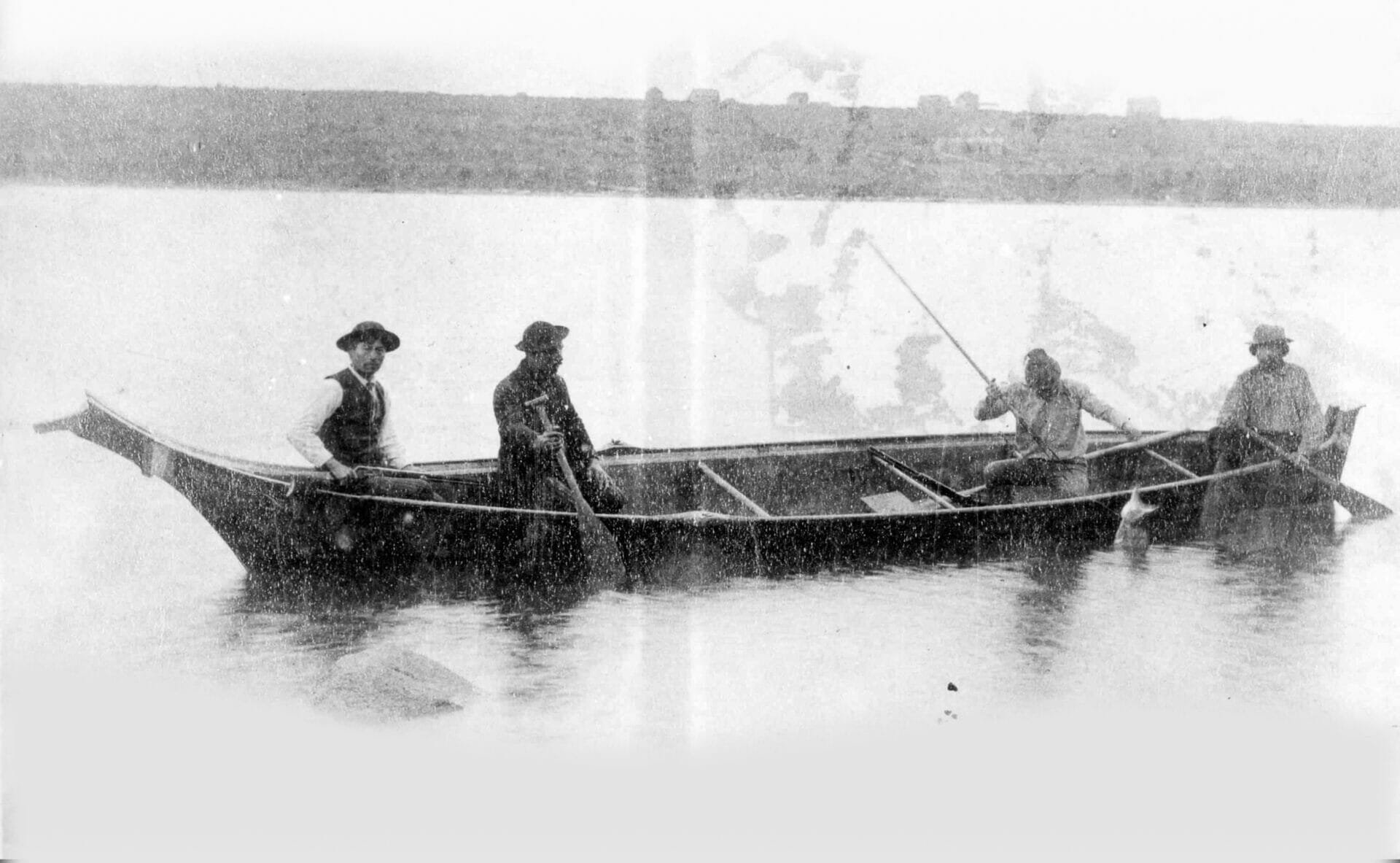
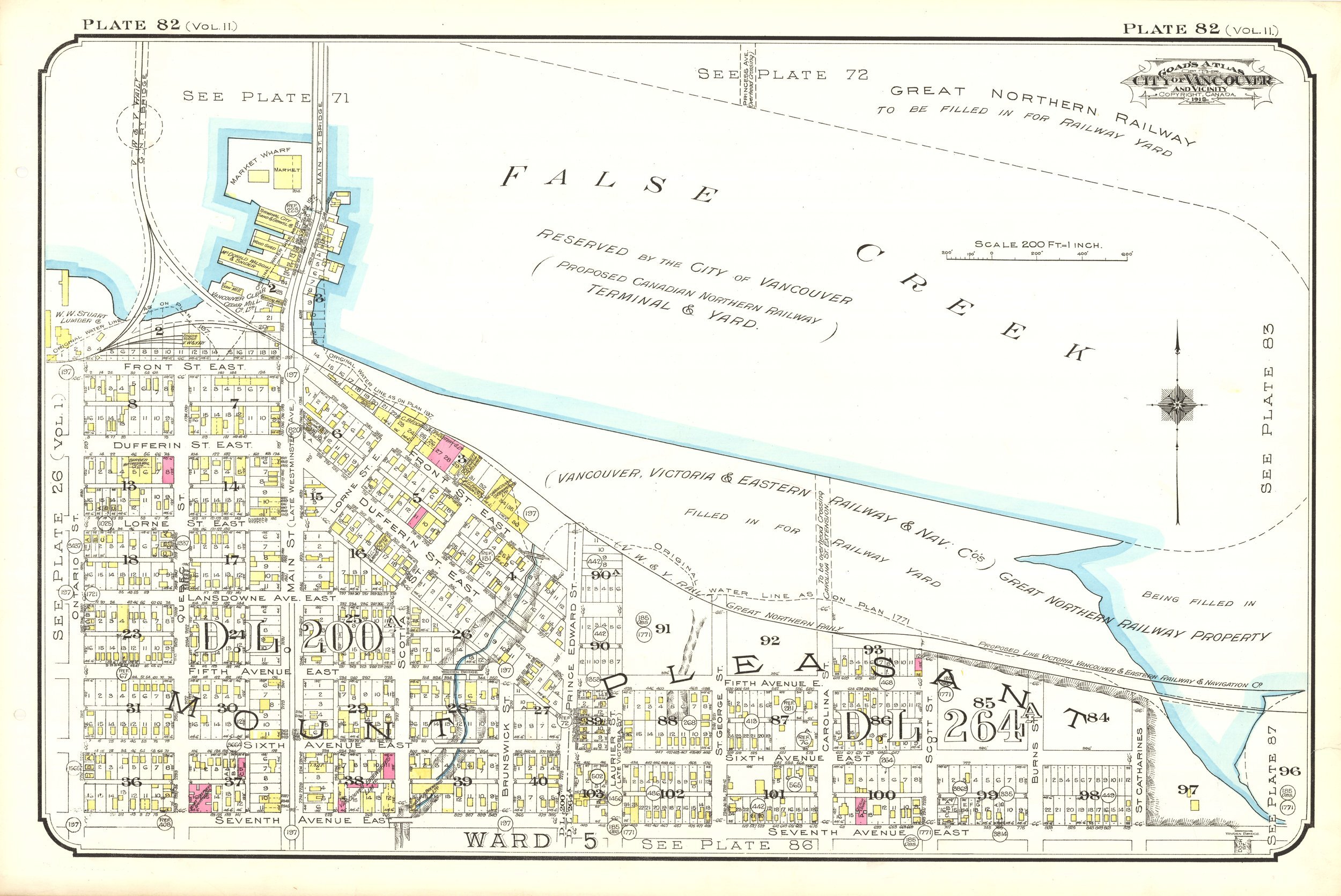
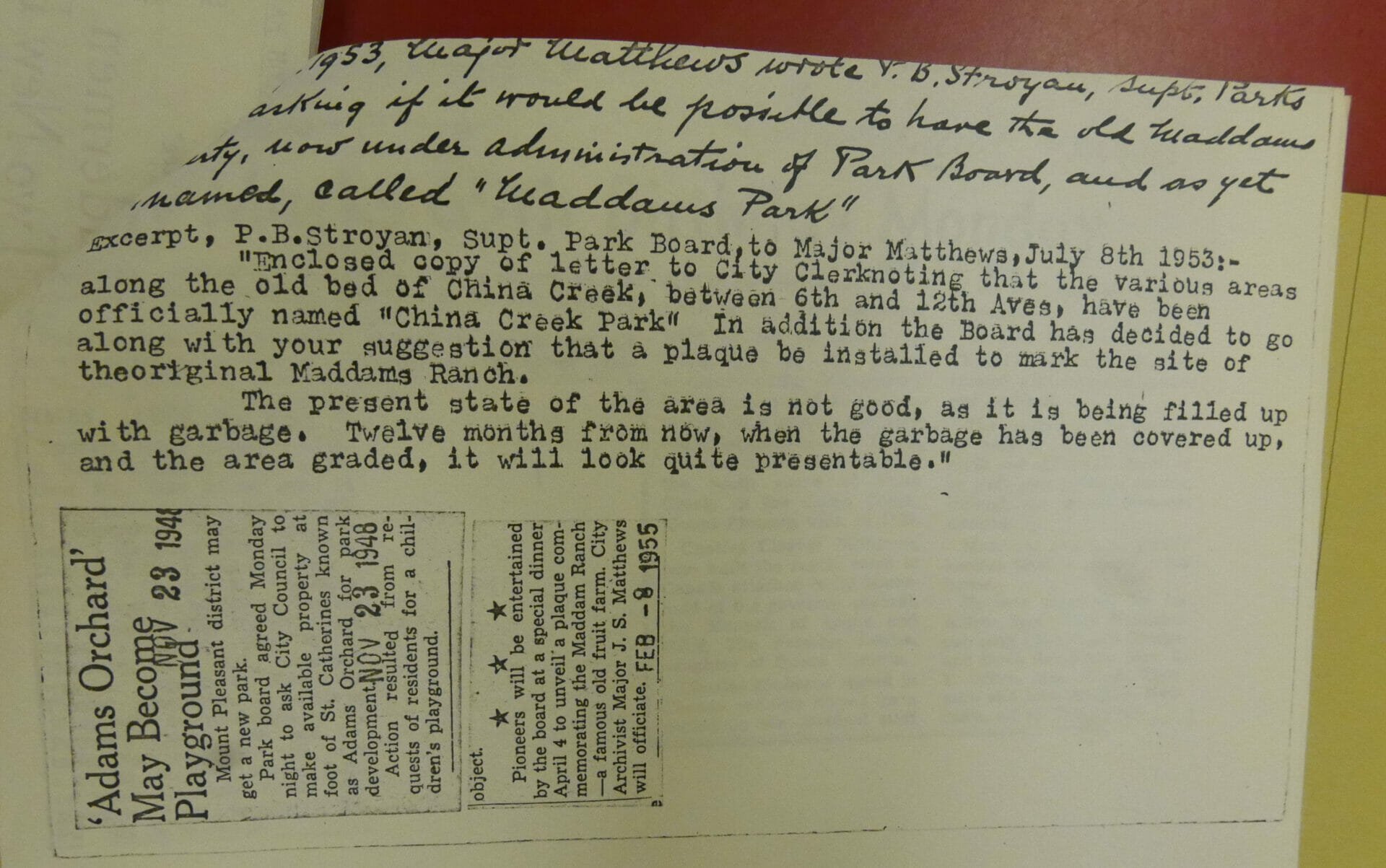
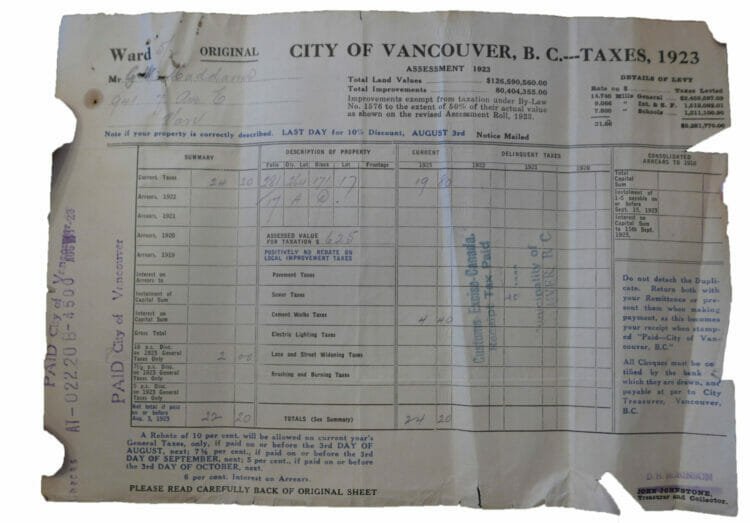

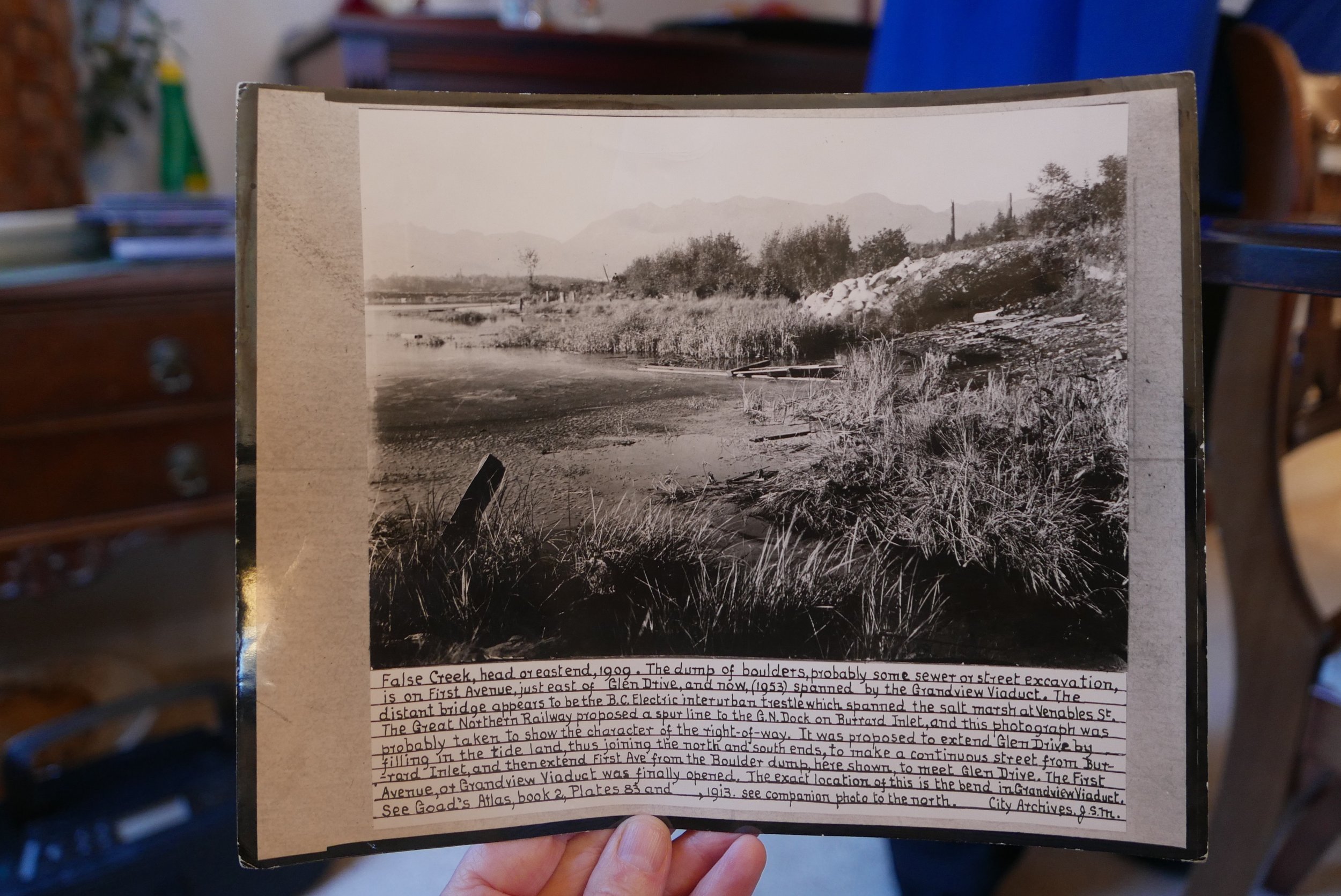
The photo below shows the development of culverts in the China Creek Park area near 7th Avenue and Glen Drive, circa 1950. In this same area, it’s astonishing to consider that children once fished for trout. The photos bear this out, such as the one we included from about 1910, shown below. The photo is included with the words of Norman G. Freshwater: “These fish were gaffed between 7th Avenue and Clark Drive.” It’s interesting to consider whether those same boys were employed as culvert builders later in life.


Our team worked with local sign fabricators who prepared custom cut and direct digital powder coated signs which are relatively impervious to damage. Layers of lexan acrylic and engraved information panels tell the story. A clear “You are here” marker shows how this location was once the edge of a saltwater marsh, abundant with plants and animals.
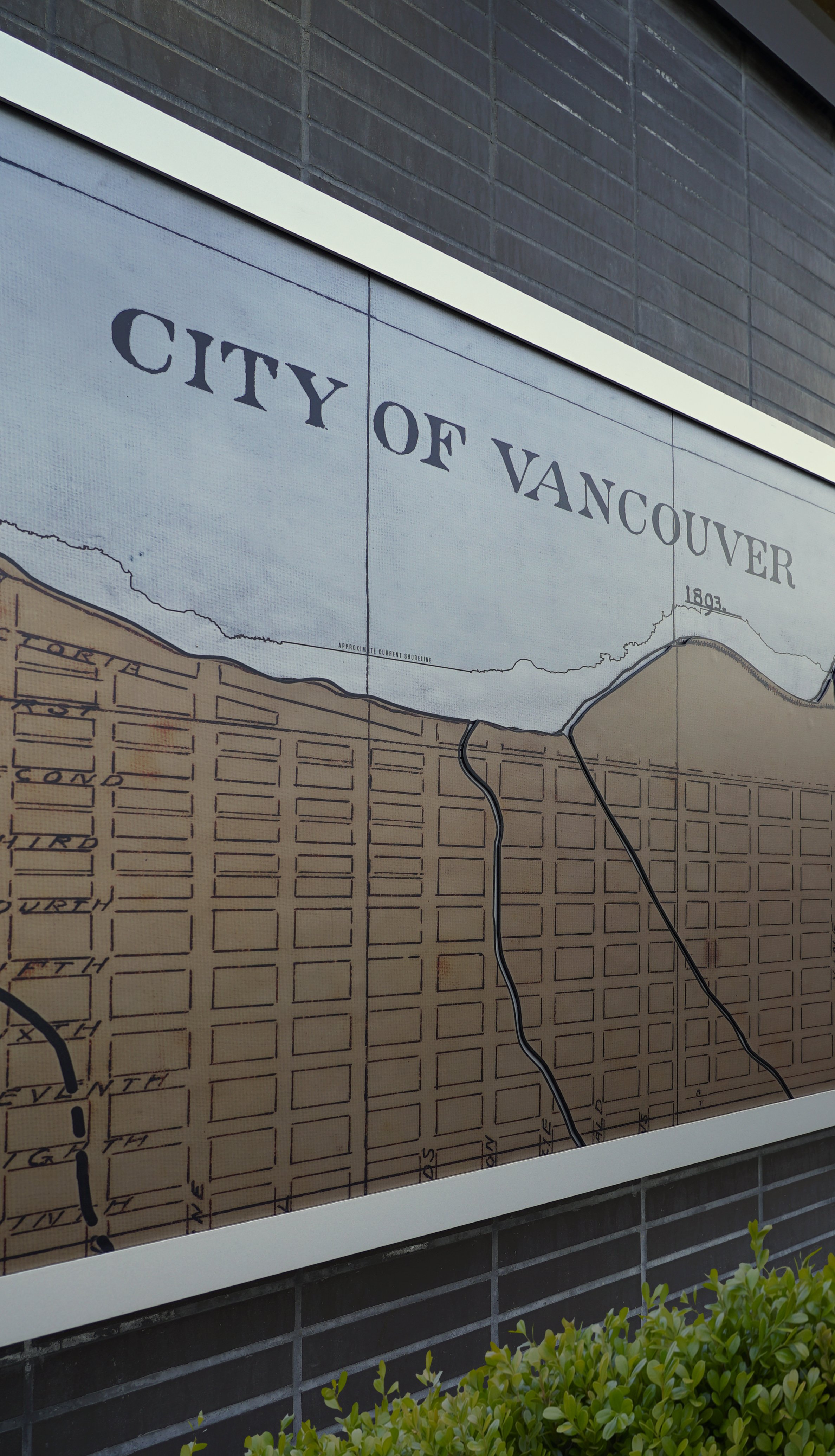

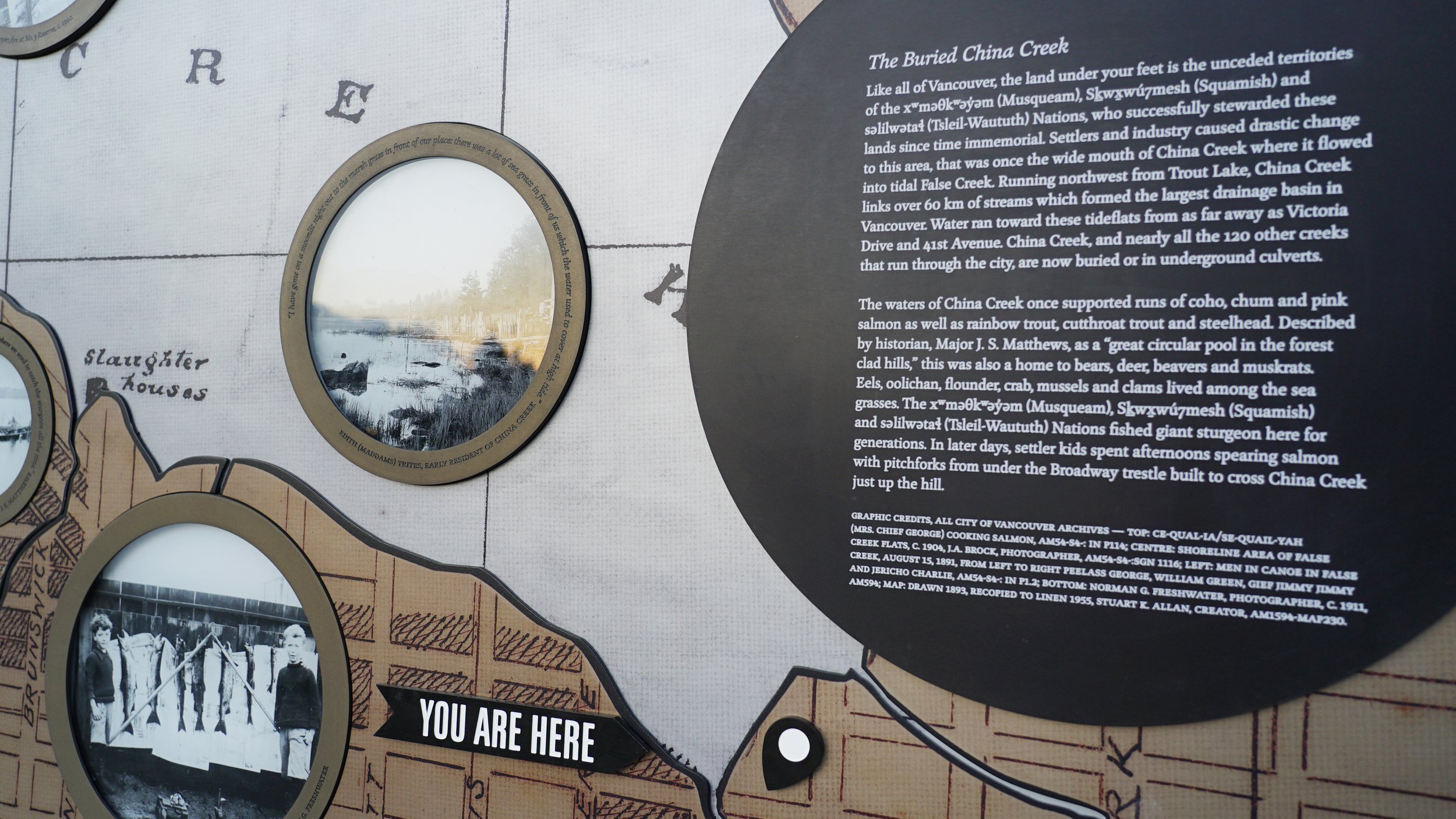



Similar Projects


